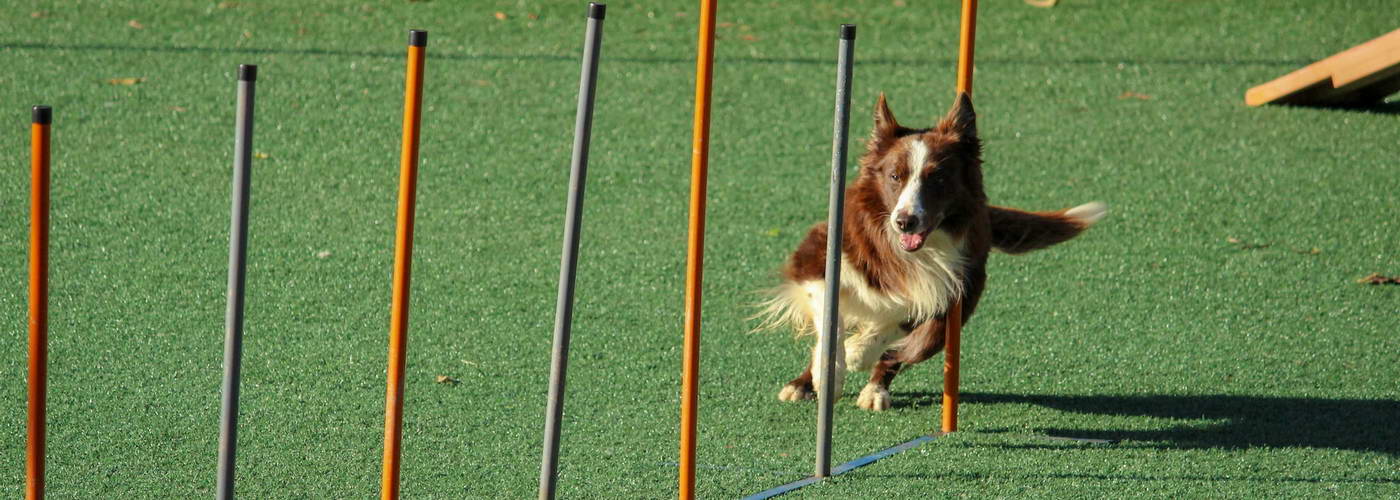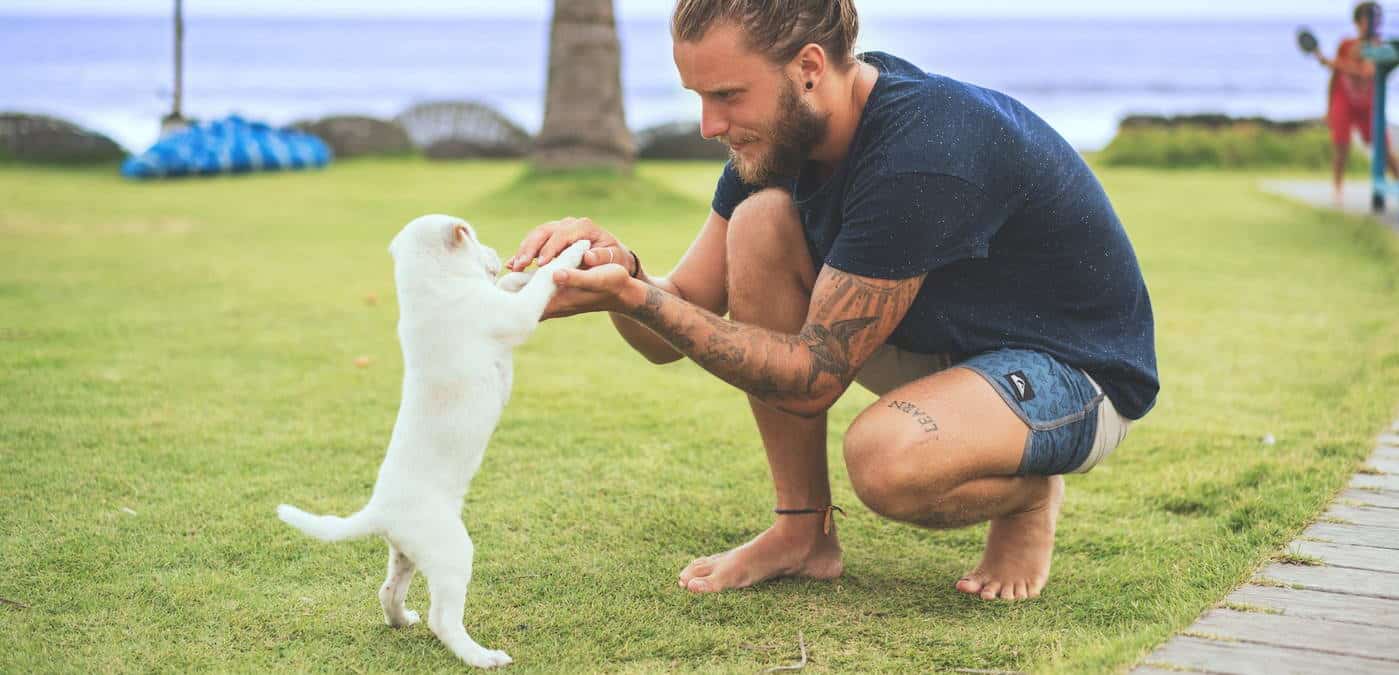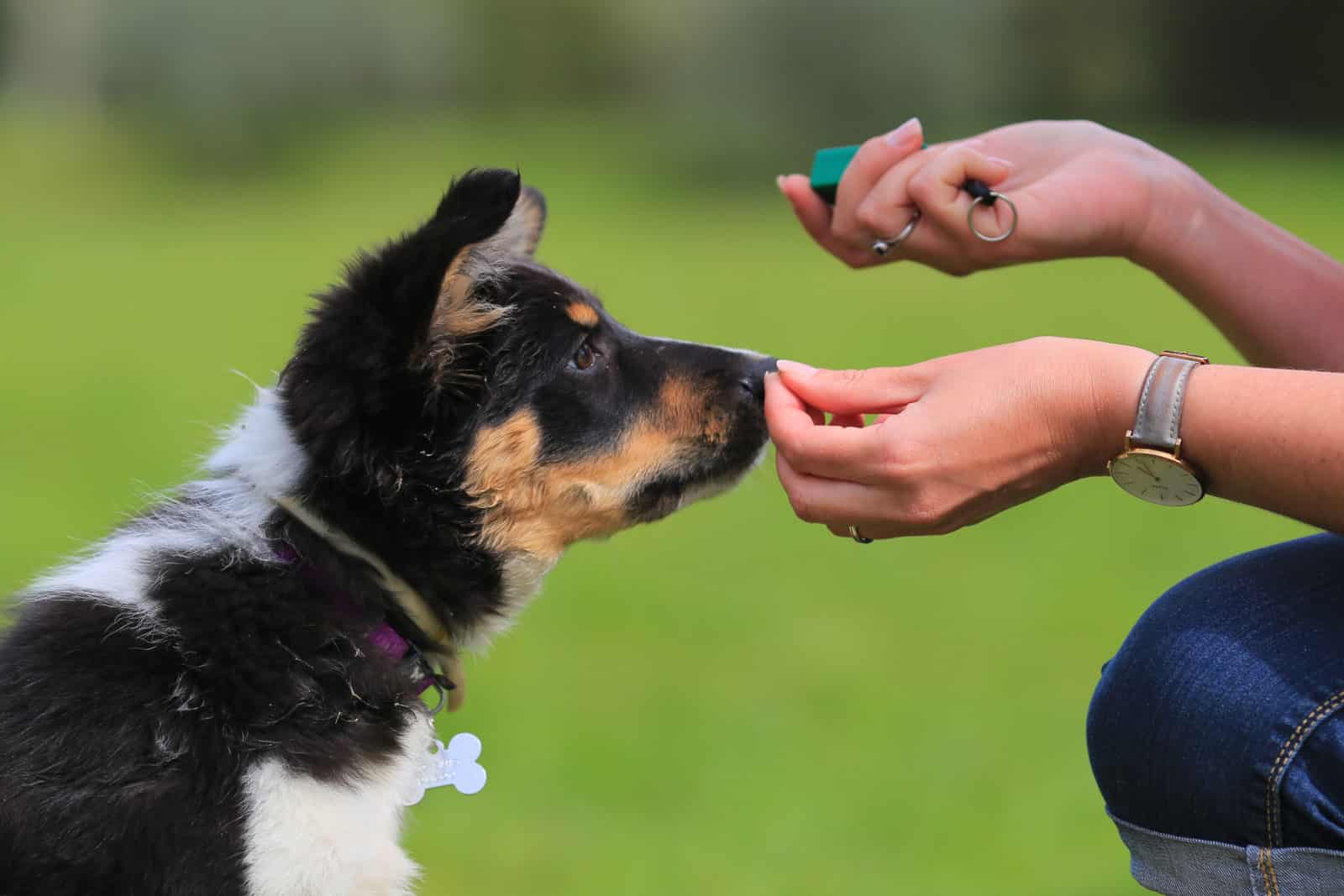Blog Dog Training Frequently Asked Questions
Training a puppy can be challenging whether you are a first-time pet owner or a seasoned trainer. A well-trained dog is key to a comfortable, trusting, and fun relationship with your puppy. We have provided answers to common dog training questions that you should know before you start to train dogs.
What is the right puppy for me?
There is no right or wrong answer to the question. When choosing a breed, consider your energy level, lifestyle, and living situation.
- Do you live in an apartment or a house?
- Is there a backyard or dog park nearby?
- Will you be able to provide the long walks energetic dogs need?
- Are you a homebody or an adventurous and active person?
- Can you afford to buy from a breeder?
- Can you afford special dietary needs for a dog?
Do some research to determine the breed that suits your budget and lifestyle. Note the activity level, history, and personality of the dog’s breed that interest you. Training that goes against a dog’s natural abilities may put too much pressure and stress on a puppy by overtraining when you do not see results.
It can be damaging psychologically and be the cause of severe anxiety. Select the one that suits your financial and living situation. Mental stimulation and exercise are necessary, not a bonus. You need to be able to meet the dog’s physical and personal needs.
Put a ticking clock near the sleeping area and give the puppy a warm hot water bottle. This setup imitates the heartbeat and heat of littermates and soothes the puppy in a new environment. It is beneficial for a dog that lived in a loud, busy shelter. Whatever you do to help a new dog get comfortable is good for both of you.
How do I prepare for dog training sessions?
Be neutral and calm. Any excitement or agitation on your part negatively affects the obedience training outcome. Obedience training aims to reinforce good behavior and ignore bad behavior. Producing a well-trained dog requires conviction and determination.
What is meant by puppy socialization?

Socialization is a process of introducing a puppy to new objects, people, smells, and sounds to help make them comfortable in new environments. The best time to socialize dogs is when puppies are between three and 20 weeks old.
They are naturally open to new experiences and more curious at that time. You can socialize older and adult dogs, but the process is slower. You have to combat fear and anxiety and break bad habits.
The socialization period provides opportunities to introduce memories that will last forever. Puppies are uninhibited, exploratory, and eager. It is essential to take advantage of their enthusiasm.
What strategies are used to socialize a puppy?
There are a variety of puppy socialization strategies. They include
- Exposing them to unfamiliar situations, new environments, and loud noises
- Discouraging nipping
- Introducing them to family members and new people
Think of the things they will encounter as they grow older, such as other dogs and noisy children. Acclimate the puppy to those experiences when they are young.
When can you start training a puppy?
Housebreaking training begins when a puppy is eight weeks old. Obedience command teaching starts when a puppy is about four or five months old. The younger the dog’s age when you enroll it in puppy class, the better.
What is the best puppy training method?
The preferred training method is operant conditioning, which involves positive reinforcement and rewards instead of punishment. A dominant method of compulsive training that physically places the dog in the desired posture was once the method of choice. A positive punishment, such as jerking on the leash, was used if the dog misbehaved.
Punishing a dog teaches them to be scared and can lead to aggression. The dog will not trust you, and the relationship breaks down completely. Dogs are coaxed with an incentive, such as a treat, to perform the desired behaviors. The treat is quickly rewarded when the puppy displays good behavior or performs successfully.
What is the clicker training method?
Clicker training is a method involving a training device during sessions with a puppy. The clicker emits a distinctive sound when pressed. Triggering a click as you offer a treat or teach technique conditions the puppy to associate the sound with the reward or command. It can help reinforce training. Clickers are particularly useful for the command to come.
What commands should be taught to a puppy?
The seven basic commands that are the foundation of other training techniques and other commands are:
- Come
- Down
- Heel
- No
- Off
- Sit
- Stay
What is the first command to teach a puppy?
Three times a day for ten to 15 minutes is recommended. Consistently short periods to train are needed because a puppy has a short attention span. When a puppy learns the commands, continue the training sessions. Regular training sessions reinforce the commands and build trust with the puppy.
When is the best time to teach puppy commands?
The most effective times to train are when the puppy is hungry and when the energy is stable (neither too tired nor too excited). When the puppy is a hungry dog, it will focus on treats. The best times to train are in the morning and before mealtimes.
Before mealtimes is an excellent playtime, toys engage the brain and stop bolting for food. Make feeding fun and slightly tiring. Tailor play sessions to the dog’s ability and breed. Flyball, tugging games, and chase games provide mental stimulation and physical exercise.
What causes a puppy to bark all the time?

All dogs have the instinct to bark. Typically, they bark at something perceived as a threat. It is impossible to prevent a puppy from ever barking. The goal is to learn a stop barking command. You can accomplish it with some dog treats and a bottle of coins. When a puppy barks excessively, say, ‘Quiet,’ shake the bottle, and repeat, ‘Quiet.’
As days pass, shake the bottle less and use the verbal command more often. When the puppy stops barking, reward it with a treat. Keep coin-filled bottles in key areas that are common for excessive barking, such as by the couch, in the kitchen, and by the door.
When is a puppy ready for off-leash training?
If a puppy has learned the command to come, they are possibly ready for off-leash training. Off-leash training only works for some puppies. Some instincts are impossible to overcome. Have a professional trainer evaluate the puppy if you are considering off-leash training to ensure the puppy is a candidate for this training style.
Is it necessary to use a crate to train a puppy?
While it is unnecessary, using a crate helps to housetrain a puppy. The ‘housetraining triangle’ is used. It consists of taking the puppy outside to go to the bathroom, bringing them in for an hour of free time, then returning them to the crate for about three hours.
After three hours, repeat the training process. This method helps strengthen the puppy’s bladder. As the puppy progresses, more playtime is added, and time in the crate is diminished to 15 to 20 minutes per day. Eventually, you may decide the crate is no longer necessary.
What should be done if a puppy has an accident indoors?
Housetraining can be a challenge. If the puppy goes to the bathroom in the house, an effective and straightforward way to discourage the behavior is to leash the puppy to some anchor for about 20 to 30 minutes. It can be a cinder block, a table, or a chair for 20 to 30 minutes. Puppies do not like to be around their business and will be discouraged from going inside again.
Service Dog Training

Documentation of a negative fecal test and the dog’s vaccination records are required before service dog training begins. Here are the answers to commonly asked dog training questions about service dogs.
What is a service dog?
Service dogs are working dogs. They are specifically trained to assist people with disabilities. They help people overcome limitations due to their disabilities and increase their quality of life and independence.
What are the differences between a therapy dog, an ESA, and a service dog?
ESAs are Emotional Support Animals whose qualifications are based on the emotional support needs of the owners. Therapy dogs go with owners who volunteer in nursing homes, hospitals, and schools. They need to be trained for specific tasks. Therapy dogs are only permitted in dog-friendly establishments where they are working. Service dogs are trained to perform particular tasks. They and their handlers are allowed in public places with a few exceptions.
What kind of tasks are service dogs trained to do?
Under the Americans with Disabilities Act, a dog is trained to perform tasks related to a handler’s disability to be considered a service dog. Dogs are trained to perform tasks customized to the handler’s needs. They can include these and other tasks.
- Assist with position changes, such as lay-to-sit or sit to stand
- Assist in a public restroom
- Assist in and out of the shower, a bathtub, or a pool
- Brace up and down steps
- Brace a fallen handler to help regain balance
- Carry items in a bucket
- Get things off the grocery shelf
- Put items on a countertop
- Deliver items from a cashier to a handler
- Carry bags in from shopping
- Deposit garbage into a can
- Drop recycling into a bin
- Hold doors open
- Nudge a paralyzed leg or arm into a secure position
- Maintain balance when a handler feels dizzy or weak or is prone to falling
- Provide momentum assistance
- Pull cords to open curtains
- Load and unload laundry
- Turn lights on and off
Are there specific breeds, ages, and sizes of service dogs?
Dogs are eligible for service dog training when they are six months old. Puppies should have a solid foundation and appropriate socialization as soon as possible. A trainer will work with the dog if a dog is in good health, can pass a readiness test, and is appropriate for the required task. It is recommended that adult dogs not be older than four years old. A dog trained for scent detection should be younger than one year old.
What methods are used to train service dogs?
The training sessions are thoughtful, minimally stressful, and learner-centric. Only gentle methods based on behavior science and dog training are used. The most humane method is positive reinforcement. Shock collars are not recommended as part of the training process.
It works faster than other training methods and increases the odds of a dog learning the required skills. The K-9 Training Institute trains calm and well-behaved dogs. Those same training methods are used at VIP to train your dog.
Are service dogs trained for protection?
No. Training a service dog for perceived aggression or protection is not an ADA-covered task and does not align with the training philosophy and training methods for service dog training. Many pet owners feel their dog protects them from threats.
It may be a comforting thought, but the dog feels frustrated. Dogs that growl when people approach them are exhibiting resource guarding. Protective dog behavior is dangerous and will get worse. It would be best if you addressed it quickly.
What does it cost to train a dog to be a service dog?
The cost of training a service dog varies depending on how much time the owner or handler can devote to training, previous training, and the behaviors dogs are trained to perform. Most dogs require one to two years to become service dogs fully trained for public access skills.
Each client and dog are different. Without getting to know the handler and the dog, it is possible to give an estimate. Payments are scheduled throughout training to make the program as budget-friendly as possible.
Choosing a Trainer

Training is a critical part of owning a dog. It builds trust between you and your dog, helps you cope with stressful experiences, and keeps the dog safe in certain situations. Prospective clients have many dog training questions that include questions about the trainer. Here are some questions often asked of potential trainers.
What makes an excellent trainer?
Motivation is high on the list of characteristics excellent dog trainers possess. The first goal should be facilitating a relationship between your dog and you. Quality dog trainers demonstrate care about your dog and you.
What qualifications should a trainer have?
A trainer’s most critical information is proof of experience and education. Anyone can lay claim to being a dog trainer, even if they do not have the appropriate skills and knowledge. Finding a certified professional dog trainer is crucial because some methods are harmful and may lead to behavior problems. Our trainer, Marc Street, has been training dogs for more than 20 years. He is among the best. His expertise extends to rehabilitating rescue dogs.
Are training sessions at Very Important Paws group classes or private training sessions?
We offer four training options
- Daycare Training
- Board Training Sessions
- Private Lessons at Your Home
- Private Lessons at VIP
Daycare training is an excellent option for those who wish to avoid parting with their dog overnight. Your dog enjoys an open-play daycare environment in-between multiple training sessions.
You drop off and pick up your dog. The VIP training program is customized to fit a dog’s training needs. At least one follow-up lesson with the owner and the dog is provided to demonstrate established training and instruct how to maintain the training.
Board training provides the opportunity for a dog to be obedience trained while a guest at Very Important Paws, under the supervision of a pet sitter. Trainers work with the owner to design a training program for a dog’s stay. It may include reinforcement of commands or addressing some behavioral issues. This customized training program also includes a minimum of one follow-up session.
Private instruction is an excellent option when life is too busy to attend group classes or clinics. Some unwanted behaviors or behavioral problems are best resolved when addressed in the environment they occur. Our trainers work around your schedule for about hour-long private lessons. Individual lessons and lesson packages are available.
If you prefer the comfort and privacy of your home, private lessons are available there. Our trainers visit your home. We train the dog and teach you how to reinforce the desired behaviors and commands.
We also offer one-on-one sessions with a trainer at our facility. Behavioral problems that you can address through in-facility and private lessons include
- Digging
- Separation anxiety
- Excessive barking
- Mouthing
- Pulling on the leash
- Jumping on people
- Housebreaking issues
- Aggression issues
Our trainers work with you to devise the best course of action. If you have further training questions, you can ask the trainer directly.

